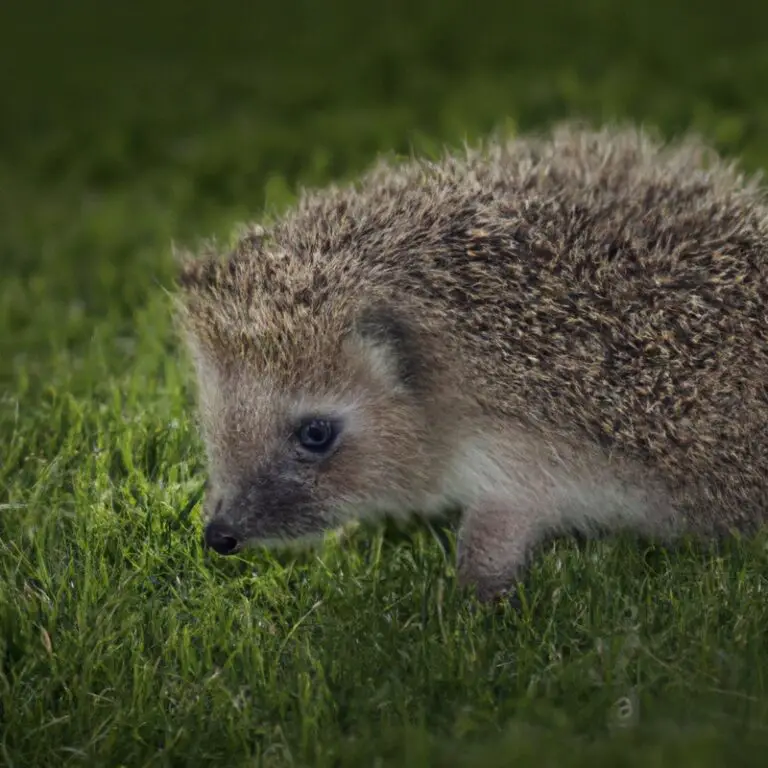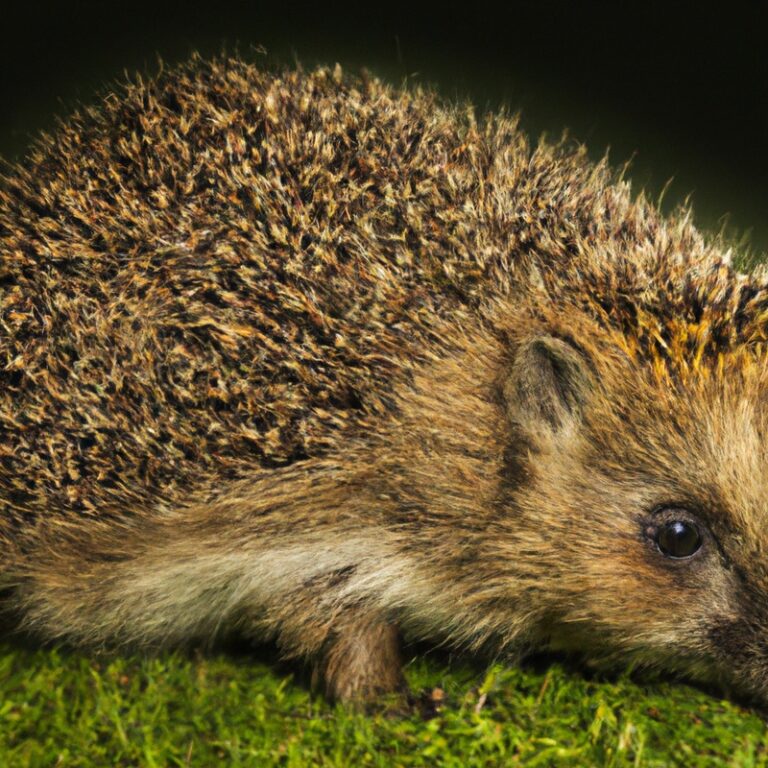How Do Hedgehogs Locate Safe Hiding Spots?
Key Takeaways:
- Hedgehogs use their acute sense of smell to locate safe hiding spots.
- Hedgehogs rely on their excellent hearing to detect potential threats and find secure hiding places.
- Hedgehogs often choose dense vegetation or burrows as their preferred hiding spots.
- Hedgehogs may also use their ability to curl into a tight ball for added protection when hiding from potential predators.
Are you curious about how hedgehogs find those perfect hiding spots that keep them safe from predators?
It turns out that these spiky creatures have some amazing senses that help them navigate their surroundings.
In this article, we’ll explore the fascinating world of hedgehogs and learn about the role their senses play in locating safe hiding spots.
We’ll also discuss the factors that hedgehogs consider when choosing a hiding spot, how they utilize their environment to find the perfect hideaway, and even how we can help create safe hiding spots for these adorable creatures in our own gardens.
So, let’s dive in and discover the secrets of hedgehog hideouts!
| Method | Explanation |
| Sense of Smell | Hedgehogs have a keen sense of smell and can locate potential hiding spots by sniffing out familiar scents or detecting scent markings left by other hedgehogs. |
| Hearing | Hedgehogs have excellent hearing abilities. They can locate safe hiding spots by listening for the absence of predator sounds or by hearing the movement of the surrounding environment. |
| Sight | Hedgehogs have poor eyesight, but they can still use their vision to identify potential hiding spots, such as dense foliage or crevices. |
| Tactile Sensitivity | Hedgehogs have sensitive whiskers that they use to navigate their surroundings. By feeling the texture and layout of their environment, they can locate safe hiding spots. |
Hedgehog senses and their role in locating hiding spots
Hedgehogs rely on their acute hearing and sense of smell to locate safe hiding spots. These senses help them detect potential dangers and find suitable hiding places for protection.
Role of hearing in locating hiding spots
Hedgehogs rely on their acute hearing to locate safe hiding spots.
Their ears can detect a wide range of sounds, allowing them to identify potential threats or opportunities for shelter.
By listening carefully to their surroundings, hedgehogs can determine the presence of predators, such as approaching footsteps or rustling leaves.
They can also locate suitable hiding spots by listening for the sounds of leaves rustling, indicating a potential hiding place.
With their keen sense of hearing, hedgehogs can navigate their environment and find secure locations to protect themselves.

Role of smell in locating hiding spots
Hedgehogs rely heavily on their sense of smell to locate safe hiding spots.
Their keen sense of smell allows them to detect predators, find food, and identify potential shelters.
They can even distinguish between different scents to determine if a hiding spot is suitable for them.
This olfactory ability helps hedgehogs navigate their surroundings and stay safe from harm.
So, the role of smell in locating hiding spots for hedgehogs is crucial, as it allows them to find secure places to rest and protect themselves.

Factors hedgehogs consider when choosing hiding spots
Hedgehogs consider the availability of natural cover, the presence of predators, and the proximity to food and water sources when choosing hiding spots.
Availability of natural cover
Hedgehogs choose hiding spots based on the availability of natural cover.
They prefer areas with dense vegetation, such as bushes, shrubs, and tall grass, which provide protection from predators and harsh weather conditions.
Hedgehogs also seek out areas with plenty of leaves, fallen logs, and rocks, as these objects offer additional shelter.
Having access to natural cover helps hedgehogs feel safe and secure, allowing them to rest, forage for food, and raise their young without disturbance.
Presence of predators
Predators play a significant role in hedgehogs’ decision-making process when it comes to choosing hiding spots.
Hedgehogs are naturally cautious animals and are constantly on the lookout for potential threats.
They seek out areas where they are less likely to encounter predators, such as dense vegetation or areas with plenty of cover.
When deciding on a hiding spot, hedgehogs consider factors such as the proximity of predators, the presence of food sources, and the overall safety and accessibility of the area.
By being aware of the presence of predators, hedgehogs can increase their chances of finding a safe place to hide.
Proximity to food and water sources
Hedgehogs are highly resourceful when it comes to finding safe hiding spots.
Proximity to food and water sources is an important factor they consider.
Hedgehogs prefer to locate their hiding spots near areas where they can easily access food and water.
They tend to choose hiding spots close to gardens, compost piles, or areas with abundant vegetation that attract insects – their main source of food.
Additionally, they look for hiding spots near water sources such as ponds or shallow pools where they can quench their thirst.
This proximity to food and water helps hedgehogs ensure they have easy access to sustenance while they hunker down and stay safe.
How hedgehogs utilize their environment to find hiding spots
Hedgehogs utilize their environment by utilizing natural elements and man-made structures to find hiding spots.
Utilizing natural elements like shrubs and bushes
Hedgehogs are skilled at using natural elements like shrubs and bushes to find safe hiding spots. They rely on their keen sense of smell and hearing to locate these areas.
By maneuvering through the underbrush and foliage, they can create pathways and tunnels that lead to concealed spots where they can rest and protect themselves from predators.
These natural elements provide both camouflage and protection, allowing hedgehogs to stay hidden and secure in their environment.
Utilizing man-made structures like log piles and garden sheds
Hedgehogs are resourceful creatures and can utilize man-made structures like log piles and garden sheds as hiding spots.
These structures offer protection and shelter from predators.
Log piles provide a natural hiding place, while garden sheds provide a safe and secure environment.
The dense vegetation and dark corners of log piles mimic their natural habitat, making them an attractive option for hedgehogs.
Similarly, garden sheds provide a convenient and enclosed space that hedgehogs can use for hiding during the day or nesting.
These man-made structures enhance the hedgehogs’ ability to find safe and secure hiding spots in human-dominated landscapes.
Hedgehogs and hibernation: specialized hiding spots
Hedgehogs require specialized hiding spots for hibernation.
The concept of hibernation in hedgehogs
Hibernation is a vital aspect of a hedgehog’s life.
During hibernation, hedgehogs enter a state of deep sleep to conserve energy.
This helps them survive through the winter when food is scarce.
Hedgehogs locate safe hiding spots like piles of leaves, log piles, or cavities to hibernate.
These specialized hiding spots provide insulation and protection from extreme temperatures and predators.
Hedgehogs instinctively search for these secure places when they sense the approaching winter.
Once settled, they lower their body temperature and heart rate to conserve energy until spring arrives.
Specific requirements of hedgehog hibernation spots
Hedgehogs have specific requirements for their hibernation spots. They prefer dense and secure hiding places, such as shrubs, bushes, or piles of leaves.
These spots provide protection from predators and harsh weather conditions.
Hedgehogs also require a cozy and insulated nest, which they create using dry leaves, grass, and other natural materials. The nest helps them maintain a stable body temperature throughout their hibernation period.
Additionally, hedgehogs choose locations that are undisturbed and free from human interference.
These specific requirements ensure that hedgehogs can hibernate safely and successfully.
Human intervention to provide suitable hibernation spots
Humans can play a crucial role in ensuring hedgehogs have suitable hibernation spots.
Here’s how you can help:
- Provide safe and cozy areas: Create piles of leaves, brushwood, or log piles in your garden to provide hedgehogs with natural hiding spots.
- Hedgehog houses: Install specially designed hedgehog houses in your yard. These houses provide a secure and warm space for hedgehogs to hibernate during the winter months.
- Avoid disturbance: During hibernation, it’s essential to avoid disturbing the hedgehogs. Keep noise levels down and refrain from moving or disturbing their hibernating spots.
- Food and water: Before hibernation, hedgehogs need to build up their fat reserves. Help them by providing food, fresh water, and shallow dishes for drinking.
By taking these simple steps, you can ensure hedgehogs have suitable hiding spots for hibernation, giving them the best chance of survival during the winter months.
How to create safe hiding spots for hedgehogs in your garden
Create dense vegetation in your garden to provide hiding spots for hedgehogs.
Create log piles and piles of leaves to offer additional safe habitats for hedgehogs.
Avoid using chemicals in your garden to protect the health of hedgehogs.
Providing dense vegetation for cover
To provide safe hiding spots for hedgehogs in your garden, dense vegetation is key.
By creating areas with thick shrubs, bushes, and plants, you are providing the hedgehogs with cover from predators and a sense of security.
Consider planting hedges, thick undergrowth, or even creating a small wild corner filled with native plants.
These dense areas will encourage hedgehogs to seek shelter and make your garden a welcoming habitat for these adorable creatures.
Creating hedgehog-friendly log piles and piles of leaves
To create hedgehog-friendly log piles and piles of leaves in your garden, you can start by collecting fallen branches and logs.
Stack them loosely in a cool and shady area, ensuring there are gaps for hedgehogs to enter and exit.
Next, gather a mixture of dry and damp leaves, creating a thick layer in another part of your garden.
These piles will provide a safe and cozy hiding spot for hedgehogs to rest and hibernate.
Remember to regularly check and refresh the piles, especially during winter months, to keep them suitable for hedgehogs.
Avoiding the use of chemicals in the garden
When it comes to maintaining a healthy garden, avoiding the use of chemicals is important.
Here are some tips to help you create a chemical-free environment:
- Use natural alternatives: Instead of pesticides and herbicides, opt for natural alternatives such as neem oil, soap sprays, or companion planting.
- Mulch: Mulching can help suppress weeds and retain moisture, reducing the need for chemical weed killers and excessive watering.
- Attract beneficial insects: Encourage beneficial insects like ladybugs and lacewings to your garden. They can control pests naturally and reduce the need for chemical pest control.
- Compost: Use compost to enrich your soil naturally and promote healthy plant growth. This reduces the need for synthetic fertilizers.
- Practice proper watering: Water your plants deeply and infrequently to encourage deep root growth and reduce the risk of diseases that require chemical treatments.
By implementing these practices, you can create a chemical-free garden that is safe for you, the environment, and the wildlife that may visit.
What to do if you find a hedgehog in an unsafe hiding spot
If you find a hedgehog in an unsafe hiding spot, it is important not to disturb them and to contact local hedgehog rescue organizations for advice and assistance.
The importance of not disturbing hedgehogs
It is important not to disturb hedgehogs because it can disrupt their natural behaviors and even cause stress or harm. Hedgehogs rely on their hiding spots for protection, shelter, and to raise their young.
When they are disturbed, they may abandon their nests or become more vulnerable to predators.
Additionally, human intervention can disrupt their feeding patterns and general wellbeing. It is best to give hedgehogs space and appreciate them from a distance to ensure their safety and natural habitat is preserved.
Contacting local hedgehog rescue organizations for advice and assistance
If you come across a hedgehog in an unsafe hiding spot, contacting your local hedgehog rescue organization is the best course of action. These organizations have the expertise and knowledge to provide you with advice on how to handle the situation while ensuring the hedgehog’s safety.
They can guide you on how to safely move the hedgehog or provide assistance if necessary.
Remember, they are there to help and make sure the hedgehog gets the care it needs.
Frequently Asked Questions about hedgehogs and hiding spots
What should I do if I find a hedgehog in my garden?
If you find a hedgehog in your garden, it’s important to handle the situation with care.
Firstly, avoid touching the hedgehog directly as they may curl into a defensive ball.
Secondly, provide a safe and quiet space for the hedgehog.
You can create a makeshift shelter using a box filled with dry leaves, straw, or newspaper.
Thirdly, leave out some food and fresh water near the shelter, such as cat or dog food, or specialized hedgehog food.
Remember, hedgehogs are nocturnal creatures, so it’s best to observe from a distance and let them find their way.
Can hedgehogs climb trees?
Hedgehogs cannot climb trees.
Their bodies are not built for climbing like other animals such as squirrels or monkeys.
Hedgehogs have short legs and are more adapted for crawling on the ground.
They are skilled at finding hiding spots on the forest floor or within bushes and shrubs.
So, if you’re worried about hedgehogs getting into your trees, you can rest assured that they won’t be climbing up anytime soon.
How can I attract hedgehogs to my garden?
To attract hedgehogs to your garden, you can provide them with suitable food and a safe habitat. Here are some tips:
- Offer hedgehog-friendly food: Leave out dishes of wet cat or dog food, meat-based cat biscuits, or specialized hedgehog food.
- Provide a freshwater source: Hedgehogs need access to clean water, so leave out a shallow dish filled with fresh water.
- Create a hedgehog-friendly habitat: Leave areas of your garden wild, with log piles, leaf piles, and dense shrubs for hedgehogs to hide and nest in.
- Avoid using chemicals: Minimize the use of pesticides and herbicides in your garden, as these can harm hedgehogs and their prey.
- Install a hedgehog box: Provide a cozy shelter by putting up a hedgehog box or providing brushwood or logs in a secluded spot.
Final Verdict
Hedgehogs rely on their senses of hearing and smell to locate safe hiding spots in their environment.
They consider factors such as the availability of natural cover, the presence of predators, and proximity to food and water sources when choosing their hiding spots.
Hedgehogs utilize their surroundings by utilizing natural elements like shrubs and bushes, as well as man-made structures like log piles and garden sheds.
When it comes to hibernation, hedgehogs have specific requirements for their hiding spots.
To create safe hiding spots for hedgehogs in your garden, provide dense vegetation, hedgehog-friendly log piles, and avoid using chemicals.
If you find a hedgehog in an unsafe hiding spot, avoid disturbing it and contact local hedgehog rescue organizations for advice and assistance.







